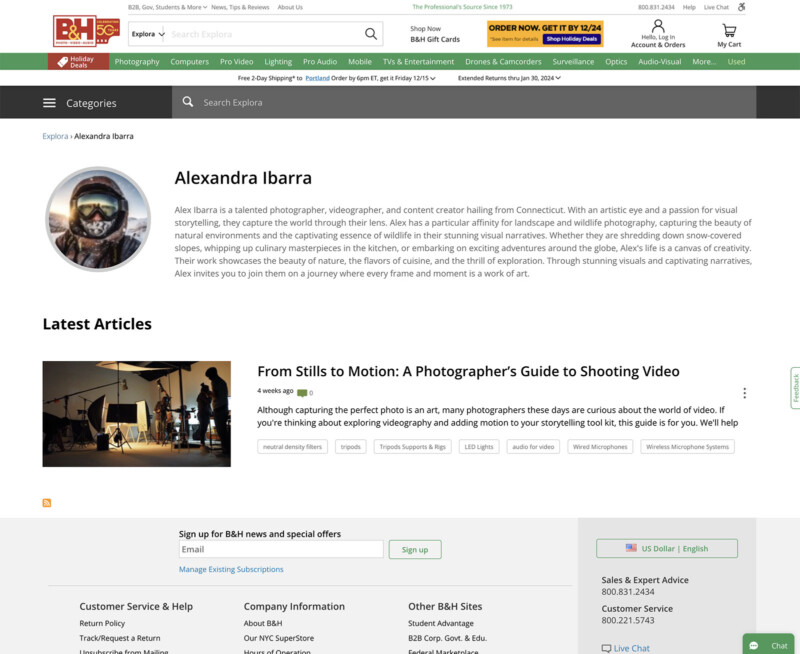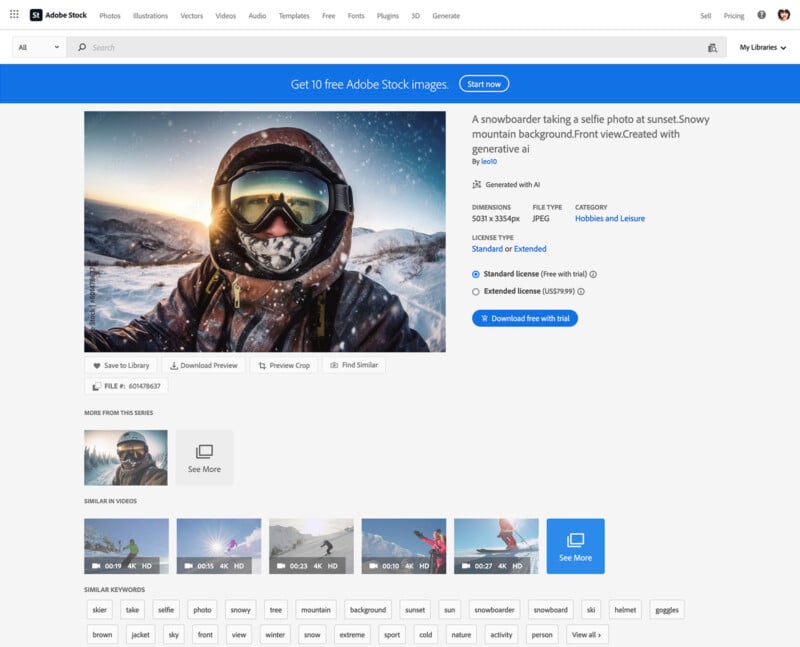![]()
B&H Photo published an AI-generated photography guide on its Explora blog under the byline of a fictional author without disclosing the use of artificial intelligence, PetaPixel has learned.
Multiple companies have toyed with the idea of using AI to generate stories, all of whom have been widely panned for the decision. G/O Media (which operates Gizmodo and Kotaku) attempted it earlier this year, the result of which was error-riddled pieces and widespread pushback from its staff. The company plans to move forward with AI authors despite this. Gannett, which operates USA Today, also attempted it but pulled back after it resulted in “botched” coverage of high school sports. More recently, Sports Illustrated was accused of the practice, a decision that resulted in widespread derision and the firing of its CEO.
In short, companies were quick to jump on the AI train but human authors and readers have been widely against the practice.
It appears that B&H Photo, one of the most popular camera retailers in the United States, has used AI to generate a guide for its Explora blog. Beyond that, it created an entirely made-up person complete with an AI-generated profile photo and AI-generated biography.
The author in question was named Alexandra Ibarra. Responsible for a story published in November, Ibarra’s profile features a full biography that claims they are a “talented photographer, videographer, and content creator” and is also a talented snowboarder, chef, and globetrotter. There was no indication that Ibarra wasn’t a real person on their profile, but a cursory examination revealed otherwise.

The biggest red flag for Ibarra is the profile photo which was clearly sourced from Adobe Stock from the “Generated with AI” section.

Ibarra’s profile was used to publish a guide titled “From Stills to Motion: A Photographer’s Guide to Shooting Video,” which poses as an actual expert to readers.
When reached for comment, a B&H representative claimed the company’s policy was not to use AI-generated content and that it would “investigate this matter with our content teams.” Shortly thereafter, the article and profile were deleted. But for a month, the story remained online and positioned itself as an expert guide written by a real person and visitors to the blog would have been none the wiser.
“B&H’s policy is that we do not use AI-generated content,” a company representative tells PetaPixel.
To explain how an AI-generated story written by an AI-generated person was published despite this policy, B&H says it was part of a “test” to identify and protect against such content.
“Our editors wrote a test article in mid-November as part of their efforts to identify and protect against AI-generated content. They overlooked adding disclosure to the article indicating that it was AI-generated, which was a mistake, and did not delete the article after the test.”
It’s not clear what kind of test would require creating a profile and publishing a whole story supposedly written by them publicly. Beyond that, if it were a test, there is not a clear reason why the company had to go so far as to purchase a stock photo to use as a profile photo accompanied by an AI-generated biography, especially considering not every author for B&H Explora has a profile page.
When asked about which authors on the Explora blog get profile pages, B&H responded, “We typically do not create a writer profile unless we use someone more than occasionally.”
That’s additionally confusing, as PetaPixel identified another author who has written for B&H Explora multiple times but does not have an author bio page, but the AI-generated Ibarra did while having a single article attributed to them.
PetaPixel did not conclusively identify any other AI-generated authors or AI-generated guides or articles on the Explora blog. B&H also has typically shared very informative content about equipment and also produced presentations from professional photographers that have been educational and highly valuable. The company’s YouTube channel is a prime example of striking a solid balance between a retailer’s goal of selling products but also giving viewers useful information. The use of AI by the company is, therefore, out of character and the strange rationale for its existence is, frankly, troubling.
